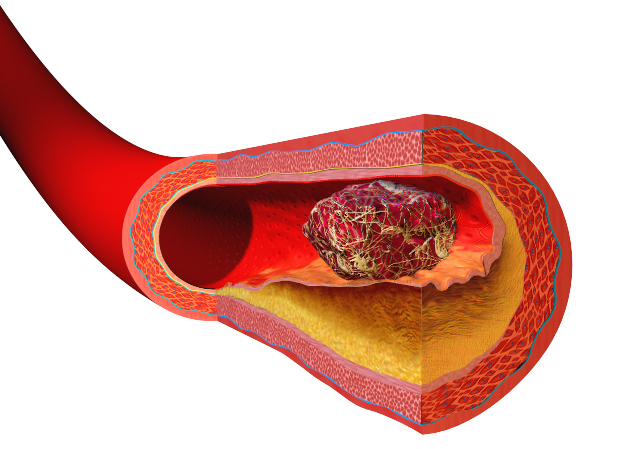
Although it sounds harmless at first blush, blood clots are no laughing matter. While the clotting process is important to keep us from bleeding out when we cut ourselves, it can pose a serious risk when these dams start forming inside your veins in the absence of an external laceration. Below, we’ll discuss how to treat and prevent blood clots in order to protect your health.
1) Get medical treatment
First and foremost, blood clots are a serious medical issue that can have lethal consequences if not treated promptly. If you are displaying symptoms of this condition (swelling, redness, and soreness on either your arm or leg), it is vital that you get to an emergency room as soon as possible.
Once there, emergency room staff will take immediate action to safely dissolve your blood clot. One of the ways they accomplish this is through the use of specialized machines made by companies such as EKOS.
The units made by this company use ultrasound waves in a proprietary process known as Acoustic Pulse Thrombolysis to break up clots into fragments too small to re-form elsewhere in the body. In the event of a pulmonary embolism, these machines are also able to get to these blockages in the lungs, saving the lives of countless people.
2) Take blood thinners
If your blood clot is not a major threat at present, your doctor will likely prescribe you blood thinning drugs to help dissolve the blockage in as non-invasive a manner as possible.
You’ll start with heparin (a drug that is injected directly into the bloodstream) and warfarin (which is a pill that is taken orally, which is also known by its commercial name Coumadin).
After a week of needles, you’ll cease using heparin, but continue to take warfarin for at least three to six months. Check in with your doctor regularly during this time, and you’ll have an idea of the progress you are making.
If the clot hasn’t clearly to the satisfaction of your MD, you may need to stay on warfarin longer than that.
3) Prevent the formation of future blood clots
Now that you realize that you have a tendency to form blood clots, it is important that you make changes in your lifestyle to prevent the formation of these dangerous structures.
From this day forward, make an effort to wear loose-fitting clothing, socks, and stockings, as anything that is tight and constricting could trigger the clotting process in your veins.
Compression stockings, which encourage blood flow in your lower body, may have to be worn if prescribed by your doctor.
When traveling, don’t stay in a stationary sitting position for prolonged periods of time (in excess of an hour). Get up and walk the aisles, no matter whether you are traveling by bus, train, or plane.
In your diet, reduce the amount of sodium that you consume, and in the bedroom, elevate the foot of your bed by four to six inches.